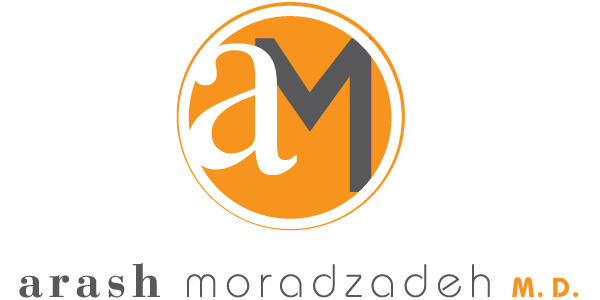Serving Beverly Hills, Los Angeles, Santa Barbara and surrounding areas
 Struggling with chronic nasal congestion, frequent sinus infections, or disrupted sleep due to breathing difficulties can significantly diminish your quality of life. These persistent symptoms often arise from a deviated septum, a common condition where the nasal passage is misaligned, restricting airflow and leading to various complications. Addressing this underlying structural issue effectively can transform your day-to-day experience, alleviating discomfort and enhancing your overall health.
Struggling with chronic nasal congestion, frequent sinus infections, or disrupted sleep due to breathing difficulties can significantly diminish your quality of life. These persistent symptoms often arise from a deviated septum, a common condition where the nasal passage is misaligned, restricting airflow and leading to various complications. Addressing this underlying structural issue effectively can transform your day-to-day experience, alleviating discomfort and enhancing your overall health.
At AM Facial Plastics in Beverly Hills, CA, we specialize in septoplasty, offering expert care to correct deviated septums and improve nasal function. With this surgery, we aim to enhance your breathing, reduce nasal congestion, and improve your overall quality of life with minimal downtime and discomfort.
What Is the Septum?
The nasal septum is the wall between the nostrils that separates the two nasal passages. Made up of thin bone in the back and cartilage in the front, it supports the nose structurally and directs airflow. A deviated septum occurs when the cartilage or bone is not straight, which can make breathing difficult and also lead to snoring and sometimes sleep apnea.
A person’s septum can bend to one side or another as part of normal growth and development. In some cases, it can be deviated at birth (congenital) or be caused by an injury such as a broken nose.
What Is Septoplasty?
Surgery to straighten the septum is called septoplasty, or septal reconstruction. The surgery may be combined with other procedures to treat chronic sinusitis, inflammation, or bleeding as well as to correct sleep apnea or remove nasal polyps. Individuals can benefit from a septoplasty when they have not had adequate relief with medication. The primary goal of the surgery is to improve breathing through the nose, with a secondary focus on reducing nasal discharge and post-nasal drip.
Benefits of Septoplasty
Improved Breathing
For many patients, the primary benefit of septoplasty is the improvement in nasal breathing. A deviated septum can block one side of the nose, reducing airflow and making breathing difficult. Correcting the septum’s alignment allows for better air passage through both nostrils.
Reduction in Nasal Congestion and Sinus Infections
Chronic nasal congestion can lead to recurrent sinus infections. By improving airflow, septoplasty can reduce the likelihood of these infections and decrease the overall congestion in the nasal passages.
Better Sleep
Issues with nasal airflow can contribute to snoring and sleep apnea. Septoplasty may help reduce these conditions by facilitating smoother, less obstructed airflow, potentially leading to better sleep quality and more restful nights.
Decreased Headaches
Some people with a deviated septum experience frequent headaches due to the strain of trying to breathe through obstructed nasal passages. Improving nasal airflow can reduce this symptom.
Improved Sense of Smell and Taste
Enhanced airflow can also improve the sense of smell, which can enhance the sense of taste. This is because both senses are closely linked and rely on the ability to draw air into the nose.
Correction of Dry Mouth
Improved breathing through the nose reduces the need to breathe through the mouth. This can decrease dryness and improve overall oral health.
Long-Term Relief
While non-surgical treatments like nasal sprays and breathing strips provide temporary relief, septoplasty offers a long-term solution to the structural problems causing symptoms.
Understanding the Procedure
The septum and nasal passages are lined with a layer of soft tissue known as the nasal mucosa. Through an incision made inside the nostril, Dr. Moradzadeh lifts up the tissue (mucosa) covering the septum. This allows him to see the bone and cartilage directly, with the help of an endoscope.
The doctor removes or reshapes the deviated portions of the bone and cartilage, leaving enough non-deviated bone and cartilage intact to maintain the shape of the nose. The internal incision is then stitched closed. The entire procedure takes anywhere from 30 to 60 minutes. Soft plastic sheets are placed inside the nose to help the septum heal straight and reduce the chance that scar tissue will form. Dr. Moradzadeh does not use packing.
Complex Septal Deviation and Revision Septal Surgery
Did you know that Dr. Moradzadeh is an expert at treating complex septal deviation and revision septal surgery? He is one of the first nasal surgeons in the United States to use the PDS perforated plate, a dissolvable sheet used during surgery to help support and force the septum to remain straight. Using innovative techniques, he is able to correct the deviation without removing septal cartilage. For more information on this procedure, make an appointment to see Dr. Moradzadeh for a consultation.
What to Expect Afterward
It is normal for patients to have some mild discharge for the first few days following the surgery, especially after irrigating the sinuses. Use of Afrin spray will generally stop any bleeding. Congestion and some sinus pressure are also common for the first several days after the procedure. Extra-strength Tylenol can be used to relieve this discomfort, but aspirin and non-steroid anti-inflammatory (NSAIDS) medications such as Motrin, Advil, and Aleve should be avoided because they can stimulate bleeding. Individuals who undergo septoplasty can expect to feel tired for the first few days after the surgery.
Patients should avoid straining, heavy lifting (more than 20 lbs.), and nose blowing for at least 10 days after surgery because these activities can cause excessive bleeding. The use of nasal steroid sprays should be avoided for at least two weeks after the procedure to allow the lining of the nose and sinuses to heal. Nasal saline mist sprays, however, can be used every two to three hours after surgery to help make the nose feel more comfortable.
Frequently Asked Questions About Septoplasty
Are the Results of Septoplasty Permanent?
The results of septoplasty are generally permanent. The surgery aims to structurally correct the septum’s alignment, which should provide long-lasting relief from symptoms. However, it’s important to note that other nasal or sinus issues can still occur after surgery.
What If Your Symptoms Don’t Improve After Septoplasty?
While septoplasty effectively resolves breathing issues for many patients, some might not experience significant improvement. This can occur if there are additional factors contributing to nasal obstruction, such as enlarged turbinates or chronic sinusitis. In such cases, further evaluation and treatments might be needed. Follow-up visits are important to assess the outcome of the surgery and discuss further options if necessary.
Who Is a Good Candidate for Septoplasty?
Individuals who experience chronic nasal congestion, difficulty breathing through the nose, recurrent sinus infections, or sleep disturbances such as snoring or sleep apnea might be candidates for septoplasty. It’s usually recommended when less invasive treatments, like medication, have not relieved the symptoms.
Breathe Better With Septoplasty in Beverly Hills, CA
At AM Facial Plastics in Beverly Hills, CA, our commitment to your health extends beyond basic treatment. We specialize in septoplasty, a precise surgical procedure designed to correct deviations in the nasal septum that cause breathing difficulties and other related health issues. We are dedicated to providing personalized care tailored to address your specific needs. To discover how a septoplasty can make a difference for you, contact us online or call us at (310) 659-9900 for a comprehensive consultation.


